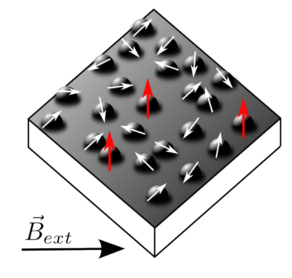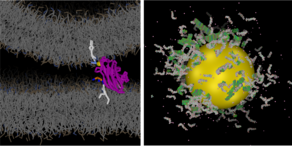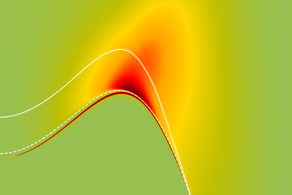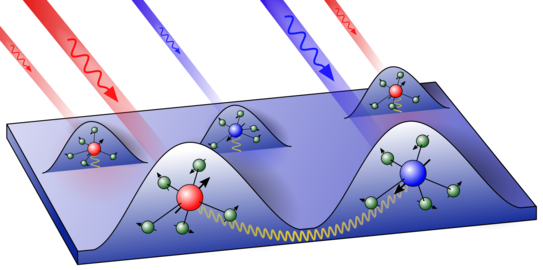NIC Project of Excellence
- Anders
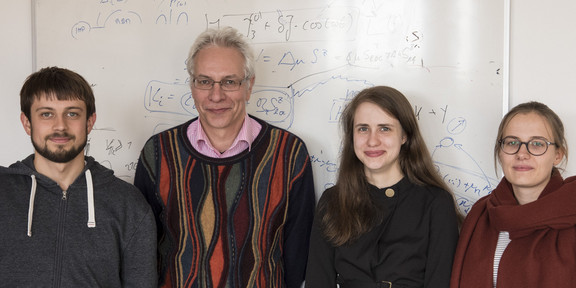
Physicists of the Anders group awarded a 2019 NIC Excellence Project
Coherently controlled electron spins in an ensemble of semiconductor quantum dots are discussed as a building block for quantum information processing due to their integrability in existing semiconductor devices. The simulations performed in the Anders group were able to make important contributions to spin relaxation times and to the imposition of non-equilibrium distributions of the nuclear spin alignment by periodic excitation with circularly polarized light. The latter leads to a partial suppression of dephasing. In addition, the research group proposes the measurement of higher order spin noise functions. The calculations show that these quantities are sensitive to very weak interactions.
In quantum mechanical calculations [1] we investigated the influence of periodic laser pulses on a quantum dot as a function of an external magnetic field. Up to 20 million pulses were considered. We were able to show that a non-equilibrium distribution of the nuclear spin alignment arises via the hyperfine interaction. The periodic maxima of the distribution can be predicted by two analytical stationarity conditions. Synchronization of the spin dynamics leads to a coherent signal before the arrival of the next laser pulse: dephasing is partially suppressed. The calculations also show the influence of the nuclear Zeeman effect on the magnetic field dependence of the amplitude of the signal. Not only the excitation frequency but also the excitation duration of the laser pulse plays a key role.
Small clusters of quantum dots were simulated to represent the ensemble using classical equations of motion [2]. Due to the growth process, not all quantum dots are identical: the excitation energies follow a Gaussian distribution. By selecting different colored lasers or by varying the laser linewidth, a subset of quantum dots of identical excitation energies can be targeted. The experimental findings in such systems can be well understood under the assumption of a weak Heisenberg interaction between the quantum dots. The elucidation of this interaction is of great interest in particular because of the possible emergence of entanglement.
Interestingly, the long-time dynamics of spin echoes in quantum dots is affected by other very weak interactions, which can only be detected and elucidated in spin-noise experiments to a very limited extent. We have therefore performed both quantum mechanical and classical simulations for fourth-order spin noise [3], in which spin noise components of different frequencies are correlated. Both simulations show a clear characteristic signal change when the quadrupolar interactions of the nuclear spins are taken into account. We therefore propose such measurements to provide new information on the nature of the interactions present.
The calculations were also funded by the DFG within the framework of the German-Russian Transregio TRR 160 Dortmund/St. Petersburg.
For more information on the NIC Excellence Project please visit the web page "Coherent control of electronic and nuclear spins in quantum dot ensembles John von Neumann Excellence Project 2019".
Literature references
- I. Kleinjohann, E. Evers, P. Schering, A. Greilich, G.S. Uhrig, M. Bayer, F.B. Anders, Phys. Rev. B 98, 155318 (2018).
- A. Fischer, E. Evers, S. Varwig, A. Greilich, M. Bayer, F.B. Anders, Phys. Rev. B 98, 205308 (2018).
- N. Fröhling, N. Jäschke, F.B. Anders, Phys. Rev. B 99, 155305 (2019).

